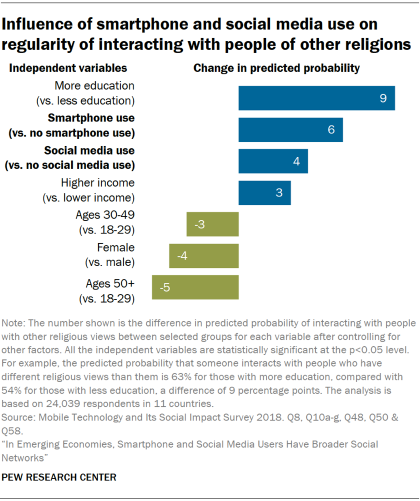Regularly interacting with people of different religious views is the dichotomous dependent variable, where 1 denotes someone who frequently or occasionally interacts with people who hold different religious views than they do, and 0 means they rarely or never do so. The independent, or predictor, variables include age, gender, education level, income level and whether people use social media and smartphones.

Overall, we find that education, income, age and gender are all associated with the likelihood of people interacting with those who hold religious views different from theirs. But, even controlling for these factors, there is a small but statistically significant relationship between smartphone use and people’s likelihood of interacting with those who have other religious views.
Holding everything else constant, a person with a smartphone has a 60% chance of frequently or occasionally interacting with people who have different religious views than they do in their country. In contrast, someone without a smartphone has a 54% chance – a difference of 6 percentage points.
There is also a statistically significant relationship between those who use social media and their likelihood of interacting with people with other religious views. Controlling for demographic factors and even smartphone use, those who use social media are 4 percentage points more likely than those who do not to frequently or occasionally interact with someone who has different religious views: Social media users have a 59% chance of interacting across religious views, while those who are not on social media have a 55% possibility.




